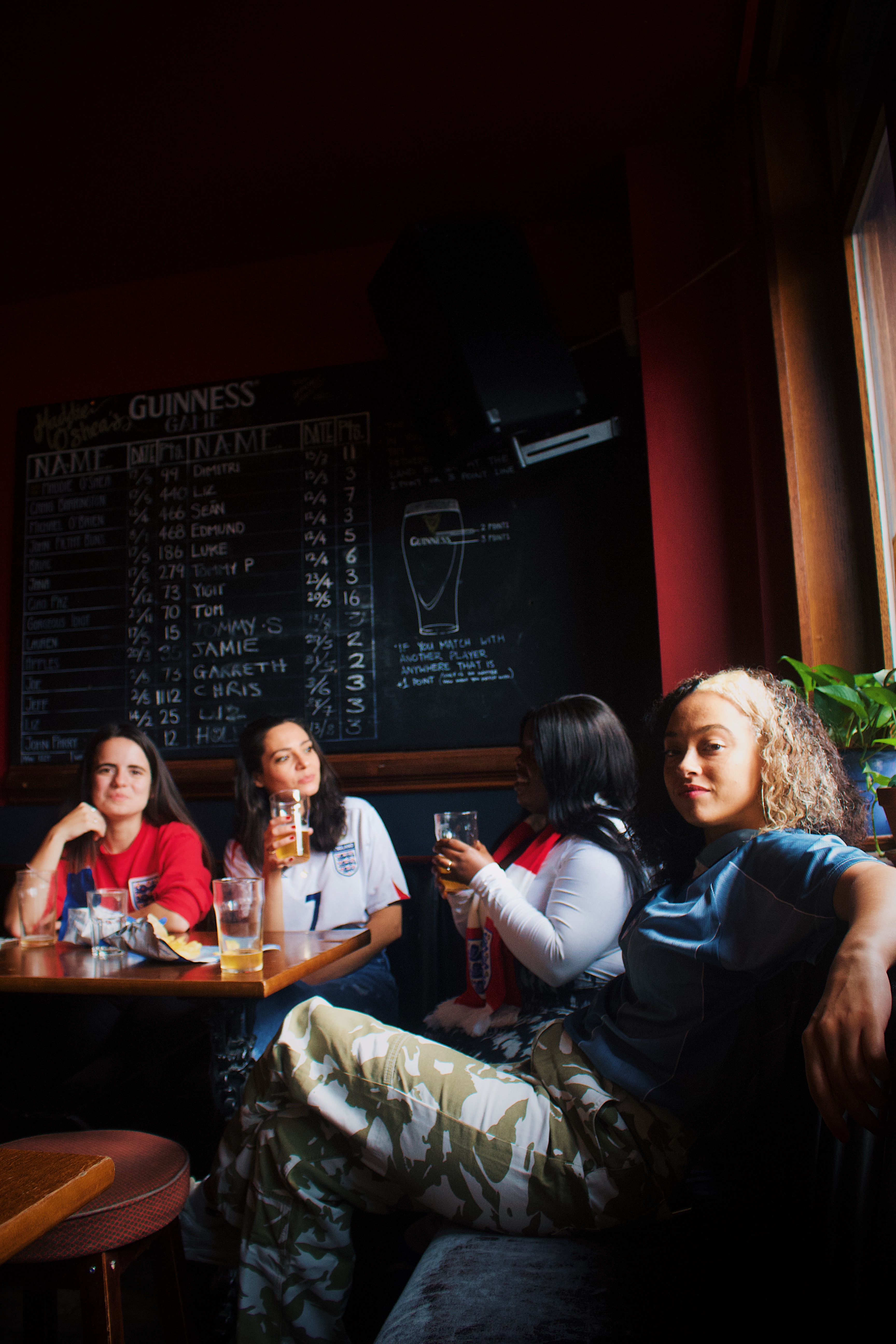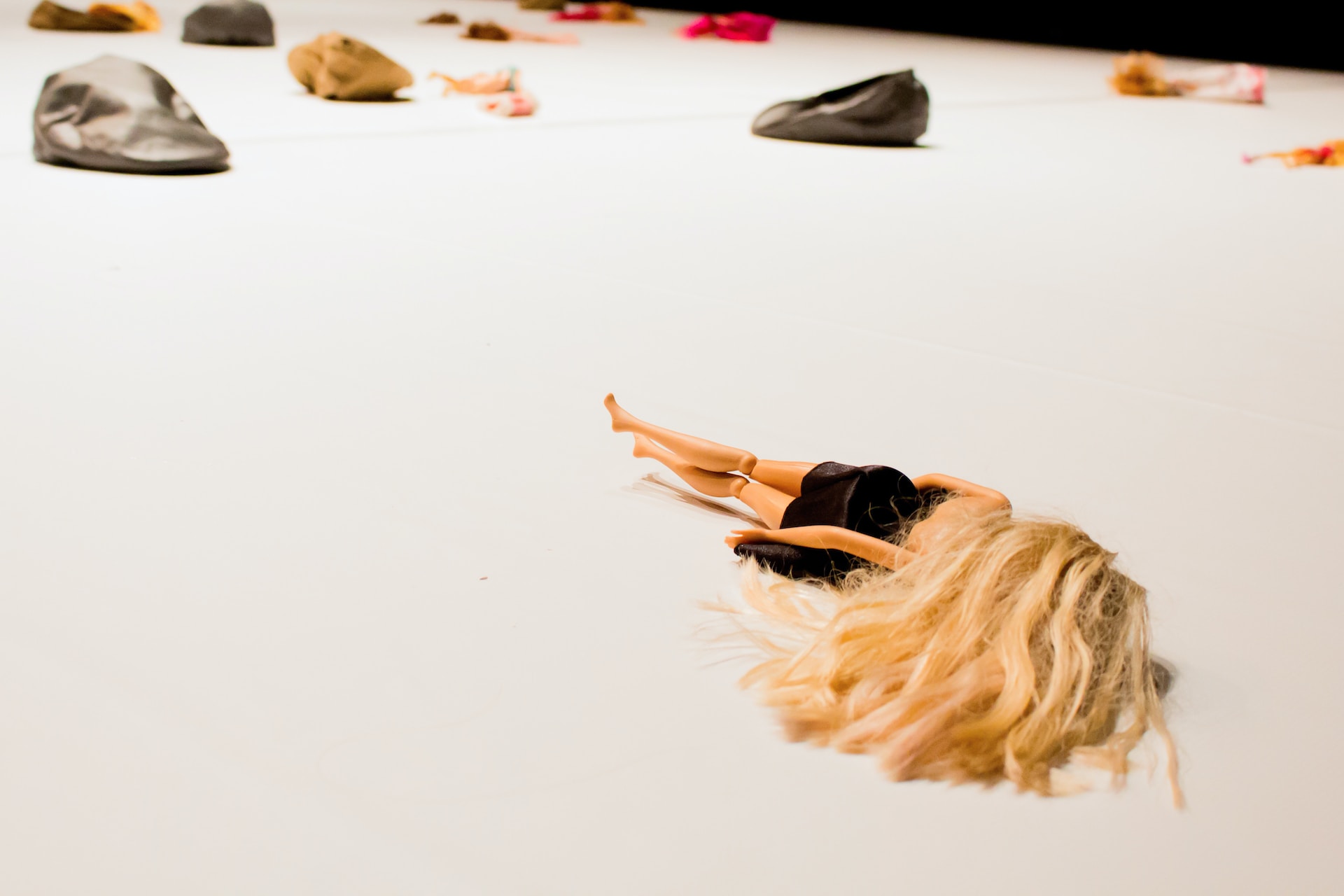The South Asian women striving for representation in football
Of more than 700 players at the FIFA Women's World Cup, only one has South Asian heritage. This needs to change.
In 2022, the England women’s national football team lifted the European Championship trophy on home soil, inspiring a generation of women and girls around the country to take up the sport. But, when you look at the squad that won, the absence of representation of women from non-white backgrounds was stark.
It’s a similar picture at this year’s World Cup. Australia’s Sam Kerr is the only player out of 700 in the tournament with South Asian heritage, and for the Lionesses, Lauren James and Jess Carter are the only non-white players in the 23 player roster.
Playing in the Thames Valley Counties Women's Football League, Nikhita Sangha has been a winger for Slough Town Ladies for four years. The 21-year-old is in her final year at university, studying Sports Science at Brunel University. She now plays for a Tier 7 team, and hopes to make a career out of playing football.
“I was quite nervous when I first went to play at the club,” Sangha explains, “But, it made me realise how much I wanted to play football. Everyone was really nice at training. That played a huge role - because if you don’t get on with the people you’re playing with it stops you from continuing.
“I wasn’t playing football for three years before I joined the team. If I didn’t know about the team or heard about it from someone else, I wouldn’t be playing right now.”
Being able to attend training sessions and access to a local club and equipment makes a difference. But these seemingly simple things are privileges that aren’t handed to everyone equally.
“The barrier in travelling to and from games and training is huge. If someone can’t get dropped off, for example. It only takes ten minutes for me to get to training, so where the club is situated was a huge plus for me.”
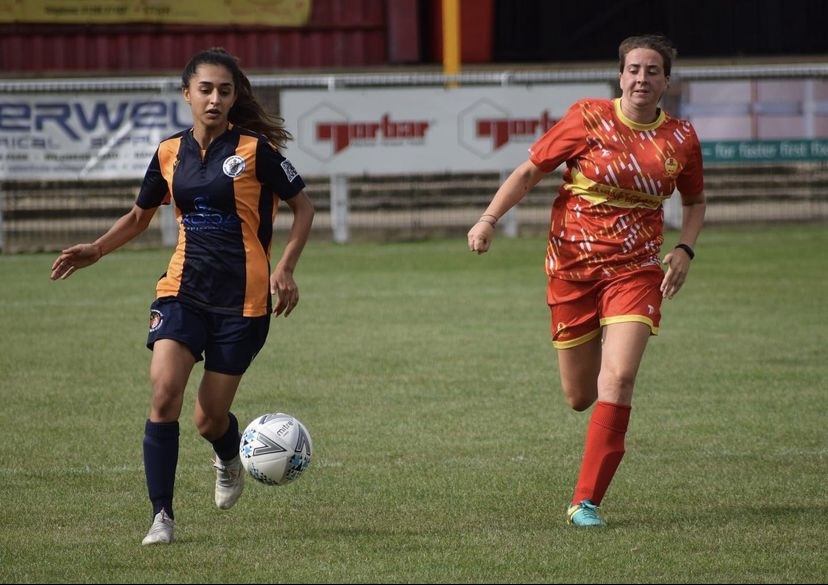
Nikhita Sangha: "When you get to 21 or 22, that's when priorities change and people tell you to focus more on your job, getting married and stuff like that."
Physical logistics are not the only hurdles. Although perceptions among South Asian families are starting to change, many still don’t see sport as a viable career. There is still pressure to secure a guaranteed wage in a respected and stable profession. Sport is a short career, and if you don’t make it to the higher echelons of the game – some families will question whether it is worth pursuing seriously.
The average salary of a women’s football player in the UK can be hard to pinpoint because clubs don’t publicly disclose what players make. But, last year, The Telegraph found that some Women’s Super League players earned as little as £20,000 a year.
Sangha has felt this pressure: "When you get to 21 or 22, that's when priorities change and people tell you to focus more on your job, getting married and stuff like that,” she says. “When you're a young girl playing, you've only got school to focus on. It’s when you get older and finish your degree. That's when people prioritise football, and many families don't class football as a job or take it seriously.”
“As a South-Asian player I don’t see many players like me. We don’t get the headlines, nobody posts about us, any coverage is always overshadowed by other players.”
Last year marked a decade since the release of cult-classic film Bend It Like Beckham. But, ten years on, there seems to have been little progress for South Asian women breaking through into the world of women’s football. Although Sangha acknowledges that while change is slow to come, the wheels are turning.
“There's definitely been improvements. You see more Asian players. We’re not the majority, but you do see more coming through. The culture is changing. But barriers still exist. It might be the clothing, not wanting to be seen. When you play football, you wear shorts and short tops. Even in just that aspect your family might not want you to do that.”
PUMA and the Institute of Health and Sport at Victoria University in Australia published insights into sport uniforms and how they affect participation. They found 43% of girls’ uniforms make them feel conscious about how they look.
But brands are starting to take note of what female players want. For the 2023 World Cup, Nike released period-conscious shorts for all their federation kits. The brand also made waves in 2018 when it released its Nike Pro sports hijab.
Where is the representation?
For minoritised groups, representation can be really important. Footballers often talk about their role models growing up, but in an industry where nobody looks like you, it’s easy to feel like you don’t belong.
“I’m an Arsenal fan. Growing up, my role models were male players,” Sangha explains. She adds that seeing more women footballers on TV is a step forward, but it isn’t enough. “As a South-Asian player, I don’t see many players like me. We don’t get the headlines, nobody posts about us, any coverage is always overshadowed by other players.”
At Queen’s Park Rangers, Manisha Tailor is currently part of a group that makes up fewer than 3% of coaches, volunteers and referees who are from an Asian background. She is also the only South Asian female – out of 92 professional English football clubs to hold a full-time coaching role in men’s professional football.
In 2021, she was promoted to the Assistant Head of Coaching for under-9s to under-16s at QPR. “If you don’t see it, then you have to be it,” she says. But pursuing a playing career was out of the question for Tailor. “I always knew that becoming a player would never happen in my lifetime because there were not many opportunities for me to play. My parents didn't see any South Asian girls playing football and at that time. You were still fighting cultural norms."
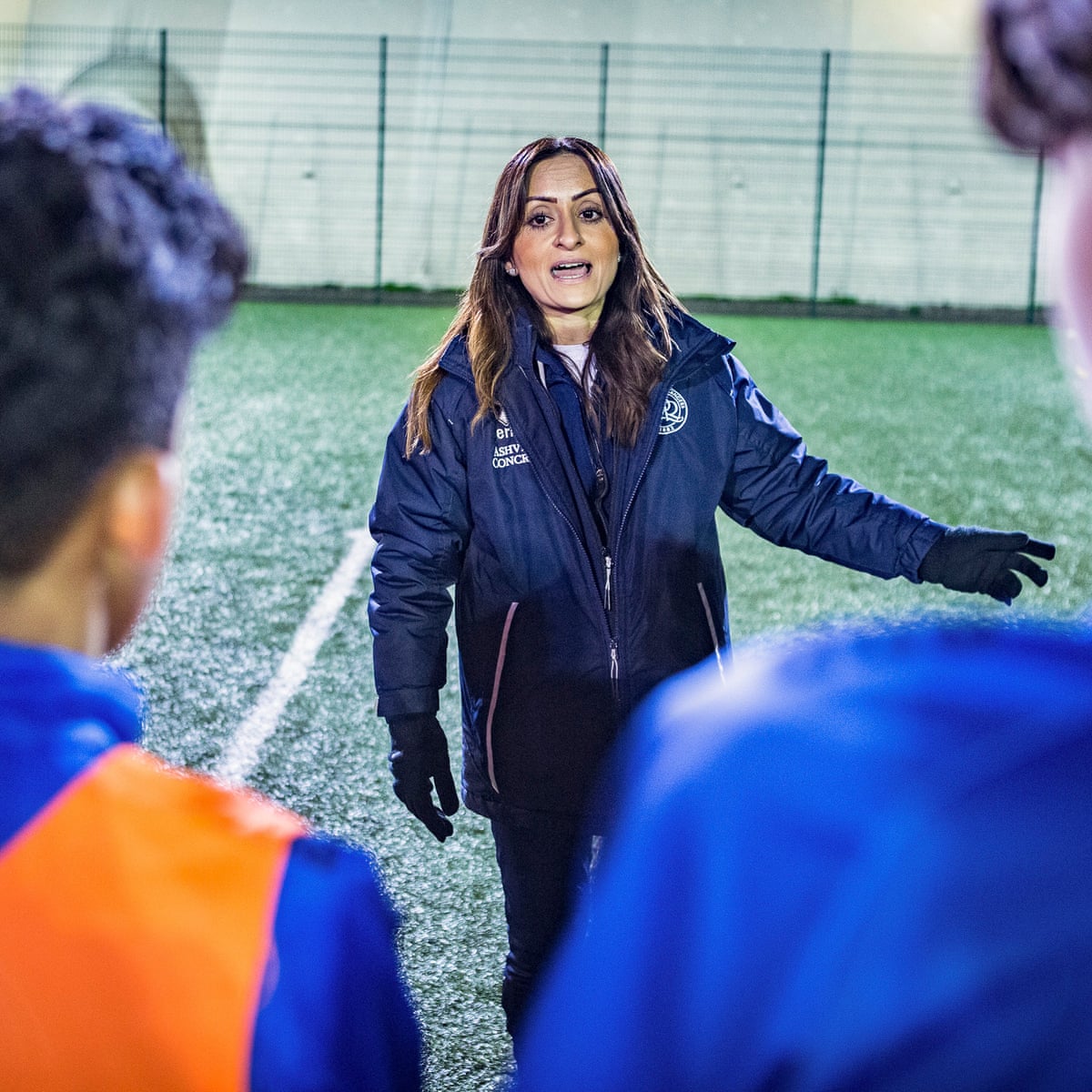
Manisha Tailor: "My parents didn't see any South Asian girls playing football and at that time. You were still fighting cultural norms."
Tailor's background as a former deputy headteacher gives her a unique understanding of how we view sports in educational settings: “It was really through my teaching career that I saw that there were very few young people taking part in activities outside of the normal school hours,” she says.
“But the kids were passionate about football. I didn’t have my coaching badges at the time and didn’t have much experience in sports, I just knew I loved football. I went to the headteacher, and she said yes to a lunchtime after-school sports club for boys and girls.”
A 2022 survey by Active Lives found that 100,000 girls have been playing football more regularly since 2017. However, there is still a gender activity gap, with 5% of boys more likely to be active than girls. The gender gap between Asian boys and girls remains the widest at 10%.
South Asian players make up 0.45% of total professionals (16 out of 3500 players).
Tailor has coached young players from grassroots to elite level for nearly a decade. Last year she obtained her UEFA A License, with a B License already under her belt. It was ex-England international and revered Arsenal legend, Rachel Yankey who first introduced her to the idea of coaching.
Two other names came up repeatedly when Tailor explained her journey to becoming a football coach, technical director and head of coaching at QPR, Chris Ramsey, and Chief Executive of London Playing Fields, Alex Welsh, whom she both regarded as important mentors of hers.
“Unless you have someone to show and make you aware of certain pathways, it’s a very unknown thing,” she adds. “Chris gave me the time to make sure I could navigate myself within a male-dominated environment. I don’t have the playing experience like others have, so I needed to equip myself with an array of qualifications and skills to try to have longevity in the game."
Unequal access
Women and girls now have more access to pathways into football than before – The Lionesses Talent Pathway being one. The aim is to provide female players with coaching, guidance and to identify talent to make it into English clubs and the national team.
One of the barriers for South Asian women previously was access to Regional Talent Centres [RTCs]. As Manisha explains, “There are very few people who come to RTCs from different backgrounds. South Asian girls are coming through, just very few of them.”
The issue is that RTCs are limited in their efficiency because of their locations. Last year Chelsea manager Emma Hayes revealed her concerns about women’s football being “middle-class”.
There are currently only 30 approved women’s football RTCs for girls aged between seven and 17. Getting to the centres can place financial burden on the families of girls from deprived neighbourhoods and those from low-income families. It’s something Anita Asante has called the “suburbanisation of training facilities”, which hinders girls from working-class backgrounds.
But, this could improve with the allocation of 60 Emerging Talent Centre (ETCs) licences, which England Football say will see the number of young female players engaged in FA programmes across the country rise from 1,722 to over 4,200 by the end of the 2023-24 season. The changes will also see 95% of players accessing an ETC within one hour of where they live by 2024.
In 2019, the FA announced the Asian Inclusion plan as part of the second phase of their Bringing Opportunities to Communities strategy.
The plan focuses on five pillars: The FA and its culture, players, coaching and financial pathways into football, grassroots football, increasing female participation of Asian females and engagement and experience in the Asian community.
A progress report released in 2022 found that male and female Asian participation in grassroots football is rising. The percentage of players aged 16+ is now at 15.4% (up from 13.5% in 2021). However, the number of professional players is significantly lower. South Asian players make up 0.45% of total professionals (16 out of 3500 players).
Grassroots pioneers
Change doesn’t have to start from the top. Zahra Ramzan, who is from Leicester and works in the NHS, is a role model at a grassroots level with the Victoria Park Queens [VPQ].
Named after the park they play in most, the club was founded by This Fan Girl’s Amy Druquer after being inspired by Leicester City’s promotion to the Women’s Super League in 2021. It’s also the city's first women’s grassroots football team.
Zahra was hesitant at first to join VPQ. "I stumbled upon them when I went to a charity football game,” she says. "I thought - I'm so shy and awkward, I don't know if I'm going to like this. But I’ll try it because I like football. That pushed me to do it. I thought, who cares if they're not as friendly as you think, or if you're the only one with a scarf on?"
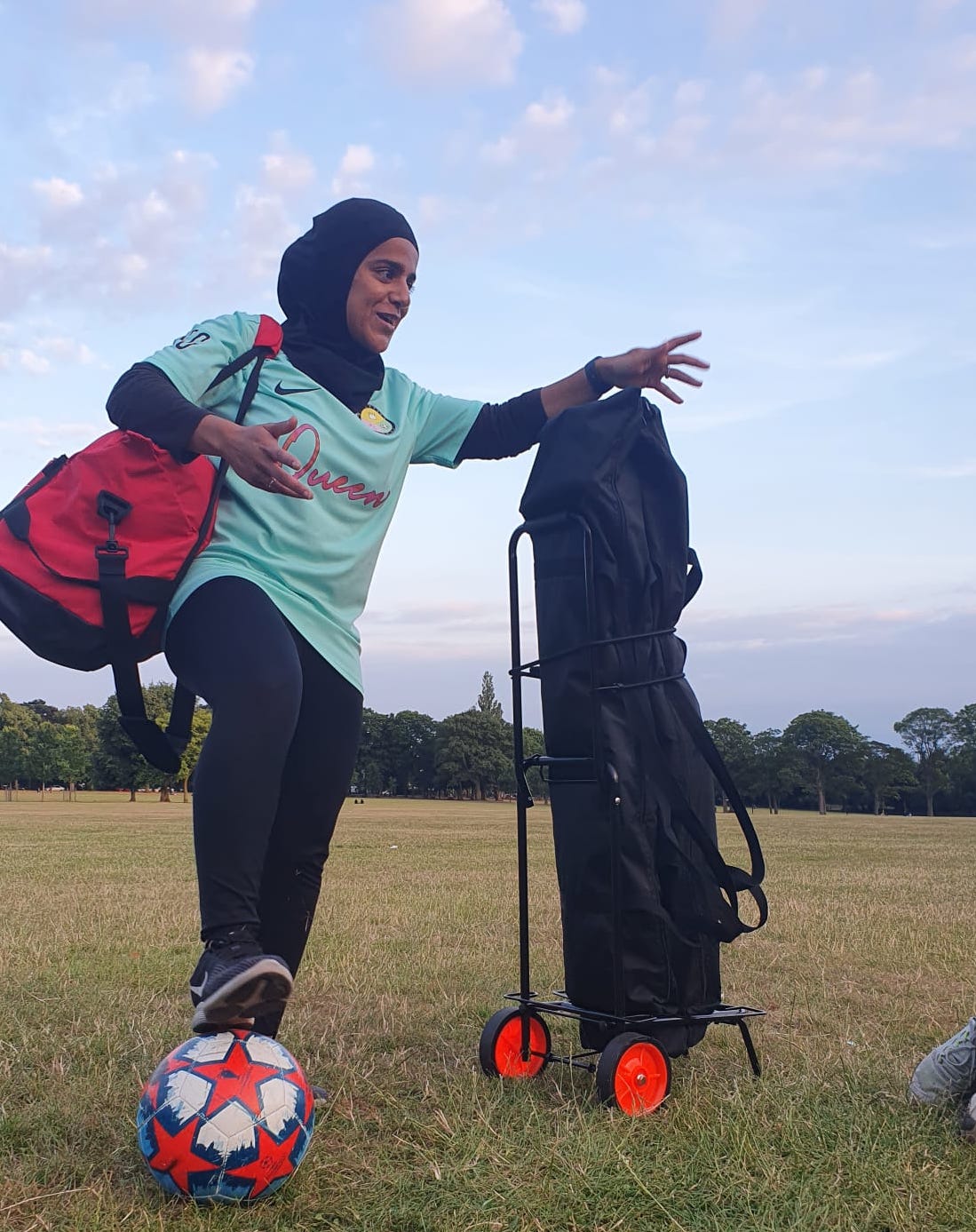
Zahra Ramzan: "Who cares if they're not as friendly as you think, or if you're the only one with a scarf on?"
"I pushed past that because I want to play football," Zahra stresses. "I went, and everyone was friendly. Now, it's my happy place. I look forward to playing there every week.
"I'm so lucky to have that space with VPQ. I can say they're becoming my close friends. I was the only girl with a scarf on and only one of two brown girls. That didn't even matter.”
The club has provided more than finding a connection with football again. Not only has it helped Zahra physically, but it has also improved her mental health. "My teammates don't realise that sometimes they just make me feel OK and happy, even when I’m not OK mentally. They make me feel good.”
In order to increase the participation rate of South Asian women in football, there needs to be a cultural shift at home for many girls. But, equally, the FA needs to invest more into outreach programmes and making pathways easier for girls - so they can access the key facilities and training which will nurture their talent.
“More needs to be done to encourage people to play, even in schools,” suggests Sangha. “I know when I was growing up, I didn't have that. We didn't have any girls’ football clubs. At a young age, that's when you need to embed it and give people the opportunity to have a go at football.
“Not many people get to play it at school. The most important thing is giving people the opportunity to play at a young age.”
On International Women’s Day this year, the British government announced a £600m package to create equal sporting opportunities for girls in school. It’s been dubbed the Lionesses legacy after the Euro 2022 winning squad wrote a letter to the government. Let’s hope this could be the start of the floodgates to open for a more representative Lionesses squad, where at the tenth edition of a Women’s World Cup in 2027 we can see the first South Asian women represent England.
The Lead is now on Substack.
Become a Member, and get our most groundbreaking content first. Become a Founder, and join the newsroom’s internal conversation - meet the writers, the editors and more.


